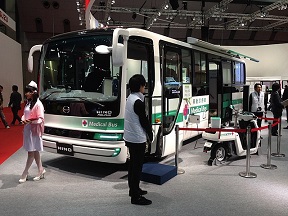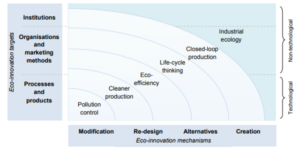What policy categories would be most suited for stimulation of sustainable innovation? Innovation subsidies? Taxation of heavily polluting activities? Strict environmental regulation? Empirical evidence shows: strict environmental regulation works best. Best by far, even. And it costs the least. Important insights, as some important sectors still need to become much more sustainable fast: construction, industry, aviation.

Research on 34,000 patents
Strict policies have the highest impact, as shown by research done by Rik Rozendaal and Herman Vollebergh of Tilburg University (the Netherlands). ‘Strict regulation works perfectly. In fact, it make innovation subsidies almost redundant,’ says Herman Vollebergh to Dutch newspaper NRC Handelsblad. He and his PhD student Rozendaal investigated sustainable innovation in the automotive sector. Stimulated by subsidies, taxation and regulation.
If we want to render more sustainable this sector, what policies will work best? The researchers did a thorough job. For their conclusion they researched some 34,000 patents, awarded to more than 3,600 automotive companies between 2000 and 2016. At present, subsidies are the preferred policy instrument. Results show that such subsidies do stimulate companies to more patent applications – they do produce innovations. But these aren’t put to practice. For instance, in the nineties the European Union spent a lot of money on subsidies for sustainable innovation in the automotive industry. This worked: the number of patent applications grew. But putting these technologies into practice lagged far behind. So in the end, the subsidies didn’t do what they were supposed to do. Yes, in Japan such a scheme worked. But here, government didn’t just subsidize, it also made sure innovations were put to practice through strict environmental regulation. Sustainable innovation: the first cars with hybrid motors were developed and marketed there.

Effectiveness of strict environmental regulation
Yet, subsidies remain the favourite official policy instrument. ‘I don’t understand why,’ says Vollebergh. But to me, the reason seems obvious: lobby by the sector. Better to receive money than having to spend it on R&D, eh? But, Vollebergh says, ‘do these subsidies actually deliver? Governments pour out money without knowing the result. Regulation works with much more precision and much better.’ And then, we didn’t even mention the most important benefit of strict envuironmental regulation to governments: it doesn’t cost a penny.
Research shows clearly the effectiveness of regulation. As soon as stricter rules for cars were announced, the number of patent applications for radically cleaner technologies rose appreciably. For instance for techniques used in electric and hydrogen-propelled cars. Strict rules create a new playing field. Manufacturers cannot comply to them by adapting existing technologies. They have no choice: they will have to innovate. But we should take care to set such standards with wisdom (taking into account the industry’s innovation pipeline), and with a certain time horizon (allowing industry to do the investments required).
Sustainable innovation
Standards that are being enforced create new markets. Sustainable innovation really took off in the automotive industry after setting exhaust regulation that couldn’t be met any more by conventional combustion engines. For then, companies knew for sure that they could only defend their market share by innovation. But why took it so long for authorities to set strict rules? We know for a long time already that strict rules get industry moving. The European Union sets rules on many policy fields, ranging from incandescent bulbs to plastic straws. Even the much cited excuse: if we regulate too strictly, companies will relocate elsewhere, proves to be untrue. Mostly, the inverse effect will appear: strict regulation works as a magnet on innovative companies. In the automotive industry, that worked in favour of Japan initially, now of Europe and the US.
Still, strict environmental regulation works best if combined with price measures. Like a high CO2 tax. But the reverse doesn’t hold true. Just a high CO2 tax appears to stimulate companies to avoid it. In order to avoid high taxes on fuels, motor car manufacturers for a long time mainly researched fuel-efficient cars. Not electric or hybrid cars. A strict rule set for the near future will fundamentally change such a landscape. For one cannot escape a rule, like one can escape high taxes. ‘Transparent and future oriented strict rules, combined with fuel taxes, clearly indicate the preferred development pathway to all. It is remarkable that precisely this orientation appears to be missing in the discussion on R&D subsidies.’ Say Rozendaal and Vollebergh.
Interesting? Then also read:
The power of subtlety
The solutions are here!
Doughnut economics, or why economists should learn more about technology
